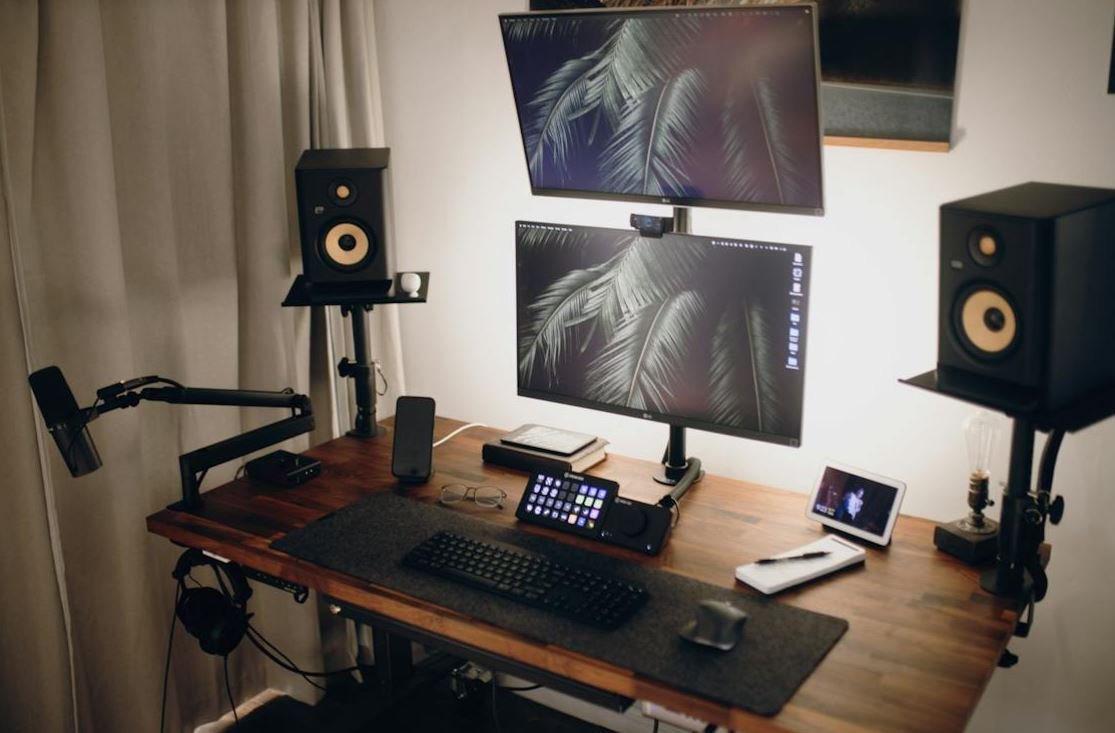What Is Store Retail
Store retail, also known as brick-and-mortar retail, refers to the traditional method of selling goods and services directly to consumers in physical stores or shops. In this model, customers visit a physical location to browse products, make purchases, and interact with sales associates.
Key Takeaways:
- Store retail involves selling products in physical stores or shops.
- Customers visit these stores to browse, purchase, and interact with sales associates.
- Brick-and-mortar stores provide an immediate shopping experience and tangible products.
*Store retail offers a unique shopping experience, allowing customers to see and touch products before purchasing.* This traditional retail format has been in existence for centuries and has served as the primary method of commerce until the rise of e-commerce.
The Benefits of Store Retail
Brick-and-mortar stores have several advantages over online retailers:
- Immediate Gratification: Customers can walk out of the store with their purchases, avoiding the wait time associated with online shopping and shipping.
- Physical Interaction: Store retail allows customers to physically interact with products, try them on, examine their quality, and seek advice from knowledgeable sales associates.
- Personalized Customer Service: Retail stores can provide personalized customer experiences, offering assistance, recommendations, and addressing concerns in real-time.
*The tactile experience of store retail allows customers to fully engage with products and receive personalized assistance.*
The Role of Technology in Store Retail
While online shopping has gained popularity, technology has also transformed the store retail industry. Retailers have embraced technology to enhance the in-store experience and compete with online retailers.
The following table demonstrates the integration of technology in store retail:
| Technological Advancements | Examples |
|---|---|
| Mobile Payments | Apple Pay, Google Wallet, contactless payments |
| Interactive Displays | Touchscreen kiosks, tablets, virtual reality |
| Augmented Reality | Virtual try-on, interactive product information |
*Technology has revolutionized the store retail experience, providing additional convenience, interactivity, and personalization for customers.*
Challenges of Store Retail
While store retail offers numerous benefits, it also faces challenges in the current marketplace:
- Competition from E-Commerce: Online retailers offer the convenience of shopping from home, wider selection, and often lower prices.
- High Operational Costs: Maintaining physical stores requires rent, utility costs, staffing, and inventory management.
- Changing Consumer Behavior: Consumers increasingly rely on the convenience of online shopping and may prefer the ease of comparing prices and reading reviews online.
*As consumer behavior continues to shift, store retail must adapt to stay competitive in a rapidly changing market.*
The Future of Store Retail
The transformation of retail continues to evolve as businesses find innovative ways to merge the benefits of online and offline shopping experiences.
The following table highlights the potential future trends in store retail:
| Future Trends | Description |
|---|---|
| Omnichannel Retailing | Integration of online and offline platforms for seamless shopping experiences. |
| Experiential Retail | Creating immersive and memorable shopping experiences to attract and engage customers. |
| Click-and-Collect | Allowing customers to order online and pick up their purchases at a physical store. |
*The future of store retail lies in combining the convenience of online shopping with the interactive and personalized experience of physical stores.*
As technology and consumer preferences continue to evolve, the retail landscape will transform accordingly. The resurgence of store retail will depend on the ability of businesses to adapt, innovate and create unique shopping experiences.

Common Misconceptions
Misconception 1: Store Retail is Dying
One common misconception is that store retail is dying due to the rise of e-commerce. While it is true that online shopping has gained popularity in recent years, physical retail stores continue to play a significant role in the industry.
- Retail stores offer a sensory shopping experience that cannot be replicated online.
- Many customers still prefer to try on clothes or test products before making a purchase.
- Brick-and-mortar stores allow customers to interact with knowledgeable sales associates for personalized assistance.
Misconception 2: Physical Stores are Only for Older Generations
Some people believe that physical stores only attract older generations who are not as tech-savvy. However, this is a misconception as physical retail stores cater to a wide range of age groups.
- Youth and young adults often visit stores to socialize and enjoy in-person shopping experiences.
- Retail stores also offer interactive displays and events that attract tech-savvy millennials and Generation Z.
- Physical stores provide a sense of immediate gratification, which appeals to all age groups.
Misconception 3: Online Shopping Offers Better Deals
Many people believe that online shopping always offers better deals compared to physical stores. While there are certainly great deals available online, this does not mean that physical stores cannot provide competitive prices.
- Retail stores often run sales and promotions that are exclusive to in-store shoppers.
- Physical stores allow customers to negotiate prices or request price matching in certain cases.
- In-store discounts can be combined with loyalty programs, resulting in significant savings.
Misconception 4: Physical Stores Lack Convenience
Another common misconception is that physical stores lack convenience compared to online shopping. However, physical stores have evolved to offer various conveniences to their customers.
- Many retail stores now offer click-and-collect services, allowing customers to order online and pick up in-store.
- Physical stores provide immediate product availability for customers who need their purchases right away.
- In-store shopping allows customers to exchange or return items more easily than with online purchases.
Misconception 5: Retail Stores Are Out of Touch with Technology
Some people believe that retail stores lag behind in adopting technology, making them less appealing to tech-savvy consumers. However, this is a misconception as many retail stores have embraced technology to enhance the shopping experience.
- Retail stores often provide free Wi-Fi, allowing customers to browse and compare products online while in-store.
- Many stores offer mobile payment options, making transactions faster and more convenient.
- A growing number of physical stores utilize interactive technologies, virtual reality, and augmented reality to enrich the shopping experience.

Number of Retail Stores in the US by Year
The table below shows the total number of retail stores in the United States from 2010 to 2020. The data highlights the trend of growth in the retail industry over the past decade.
| Year | Number of Stores |
|---|---|
| 2010 | 1,134,800 |
| 2011 | 1,152,900 |
| 2012 | 1,178,500 |
| 2013 | 1,191,400 |
| 2014 | 1,214,600 |
| 2015 | 1,233,600 |
| 2016 | 1,245,500 |
| 2017 | 1,259,400 |
| 2018 | 1,281,700 |
| 2019 | 1,304,300 |
| 2020 | 1,327,600 |
Types of Retail Businesses
The following table provides an overview of the different types of retail businesses that exist in the market. It highlights the diverse range of retail sectors catering to various consumer needs.
| Retail Sector | Description |
|---|---|
| Department Stores | Larger stores offering various product categories, often organized into sections. |
| Supermarkets and Grocery Stores | Stores primarily selling food and household products. |
| Specialty Retailers | Stores focusing on a specific product category, such as electronics, clothing, or footwear. |
| Pharmacies | Stores selling medications, health and wellness products. |
| Convenience Stores | Small stores offering convenience items like snacks, beverages, and essentials. |
| Discount Stores | Stores providing low-priced products, often with a wide assortment of goods. |
| Online Retailers | Virtual stores selling products through online platforms. |
Top 10 Retail Chains Worldwide
This table presents the top 10 largest global retail chains based on their revenue for the most recent fiscal year. It demonstrates the dominance of these retail giants in the global market.
| Retail Chain | Revenue (in billions) |
|---|---|
| Walmart | 558.75 |
| Amazon | 386.06 |
| The Kroger Co. | 122.29 |
| Costco | 152.7 |
| The Home Depot | 132.11 |
| Walgreens Boots Alliance | 131.54 |
| CVS Health | 256.78 |
| Target | 86.01 |
| Tesco | 106.98 |
| Aldi | 102.29 |
Hourly Wages by Retail Job Position
This table represents the typical hourly wage range for various job positions within the retail industry in the United States. It showcases the disparity in wages across different roles.
| Job Position | Hourly Wage Range |
|---|---|
| Store Manager | $18.00 – $30.00 |
| Sales Associate | $9.00 – $15.00 |
| Cashier | $8.00 – $12.00 |
| Visual Merchandiser | $12.00 – $20.00 |
| Stock Clerk | $9.00 – $13.00 |
Effect of COVID-19 on In-Store Sales
This table displays the decline in in-store sales for various retail sectors during the COVID-19 pandemic. It emphasizes the significant impact of the crisis on brick-and-mortar businesses.
| Retail Sector | Decrease in In-Store Sales (%) |
|---|---|
| Fashion and Apparel | 45% |
| Electronics | 32% |
| Home Furnishings | 38% |
| Sporting Goods | 51% |
| Beauty and Cosmetics | 28% |
Retail Sales by Region
This table presents the total retail sales by region in the United States for the year 2019. It illustrates the distribution of consumer spending across different parts of the country.
| Region | Retail Sales (in billions) |
|---|---|
| Northeast | 1,138.00 |
| Midwest | 1,091.00 |
| South | 1,564.00 |
| West | 1,370.00 |
Top 5 Global E-commerce Markets
This table showcases the leading e-commerce markets worldwide based on their total online retail sales. It highlights the significant role of digital commerce in modern retail.
| Country | Online Retail Sales (in billions) |
|---|---|
| China | 1,939.00 |
| United States | 791.70 |
| United Kingdom | 141.93 |
| Japan | 141.61 |
| Germany | 73.97 |
Retail Losses Due to Shoplifting
This table displays the estimated financial losses incurred by retailers due to shoplifting incidents in the United States. It emphasizes the substantial impact of theft on the retail industry.
| Retail Sector | Annual Losses (in billions) |
|---|---|
| Fashion and Apparel | 45.60 |
| Electronics | 36.10 |
| Home Improvement | 16.80 |
| Grocery | 13.50 |
Consumer Satisfaction Ratings by Retailer
This table outlines consumer satisfaction ratings for various retail chains in the United States. It reflects the level of satisfaction among customers towards these brands.
| Retail Chain | Satisfaction Rating (out of 5) |
|---|---|
| Amazon | 4.7 |
| Costco | 4.6 |
| Target | 4.5 |
| Walmart | 3.9 |
| Kohl’s | 3.8 |
As the retail industry continues to evolve with advances in technology and shifts in consumer preferences, understanding the various aspects of store retail becomes crucial. The tables above provide insightful data ranging from the number of retail stores and types of businesses to revenue figures, hourly wages, and industry trends. They also explore the impact of external factors, such as the COVID-19 pandemic and shoplifting incidents. By analyzing these aspects, businesses can make informed decisions and adapt strategies to thrive in the dynamic retail landscape.
Store Retail – Frequently Asked Questions
What is store retail?
Store retail refers to the physical selling of goods or services directly to customers in a physical store location. It involves the operation of brick-and-mortar establishments where customers visit and make purchases in person.
Why should I choose store retail over other methods of selling?
Store retail provides customers with the opportunity to see and feel products before purchasing, allowing for a more hands-on and immersive shopping experience. It also allows for immediate product availability, interaction with knowledgeable staff, and the chance to avoid shipping fees or delays.
Are there different types of store retail?
Yes, there are several types of store retail, including department stores, specialty stores, convenience stores, discount stores, and more. Each type caters to specific customer needs and offers a unique range of products and services.
Can store retail compete with online shopping?
Store retail can indeed compete with online shopping. While online shopping offers convenience and a wider range of options, store retail provides personal interaction, immediate product gratification, and the ability to try products before buying, which online shopping cannot replicate. It ultimately depends on customer preferences and the type of shopping experience they seek.
What are some advantages of store retail?
Advantages of store retail include the ability to see, touch, and try products before purchasing, personalized assistance from knowledgeable staff, immediate product availability, the opportunity to support local businesses, and the potential for socialization and networking with other customers.
How can I find store retail locations near me?
To find store retail locations near you, you can use online search engines, directory websites, or mapping apps. You can also refer to local business listings, visit shopping malls or centers, or ask friends and family for recommendations.
What are the differences between store retail and e-commerce?
Store retail refers to physical stores where customers make purchases in person, while e-commerce refers to online platforms where customers make purchases digitally. The main differences lie in the shopping experience, immediacy of product availability, ability to physically interact with products, and the presence or absence of in-person customer assistance.
What are the challenges faced by store retail businesses?
Store retail businesses face various challenges, including rising operational costs, competition from online retailers, changing customer preferences, maintaining adequate inventory, attracting foot traffic, managing staff, and ensuring a seamless and enjoyable shopping experience for customers.
How can store retail businesses attract more customers?
To attract more customers, store retail businesses can utilize effective marketing strategies, offer competitive pricing, provide excellent customer service, create visually appealing displays, host events or promotions, implement loyalty programs, engage with the local community, and establish an online presence to complement their physical store.
What is the future of store retail?
The future of store retail is likely to involve the integration of online and offline experiences. Physical stores may focus more on providing immersive and experiential environments, while digital technologies and data-driven insights will enhance the personalization and convenience of the overall shopping journey.




